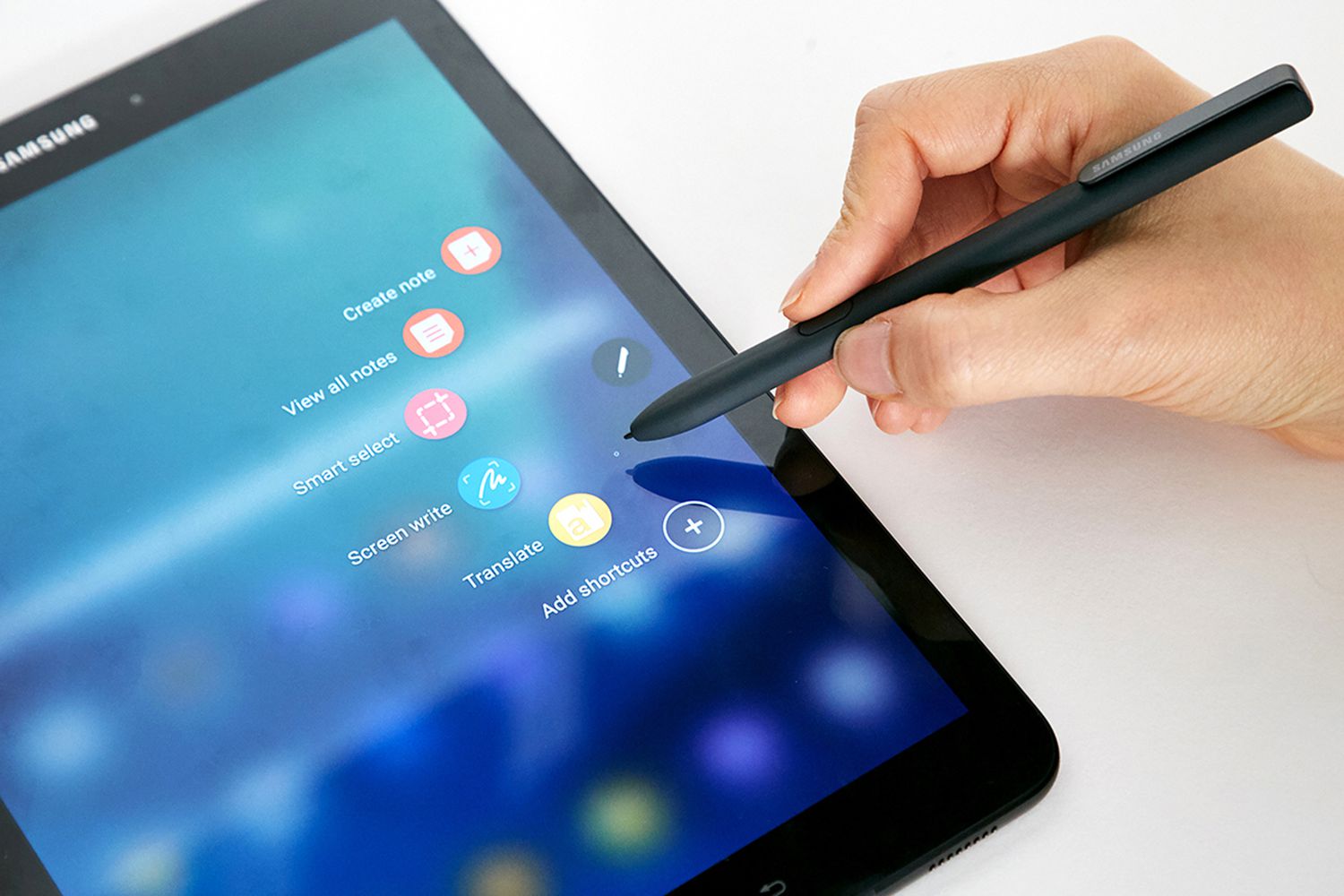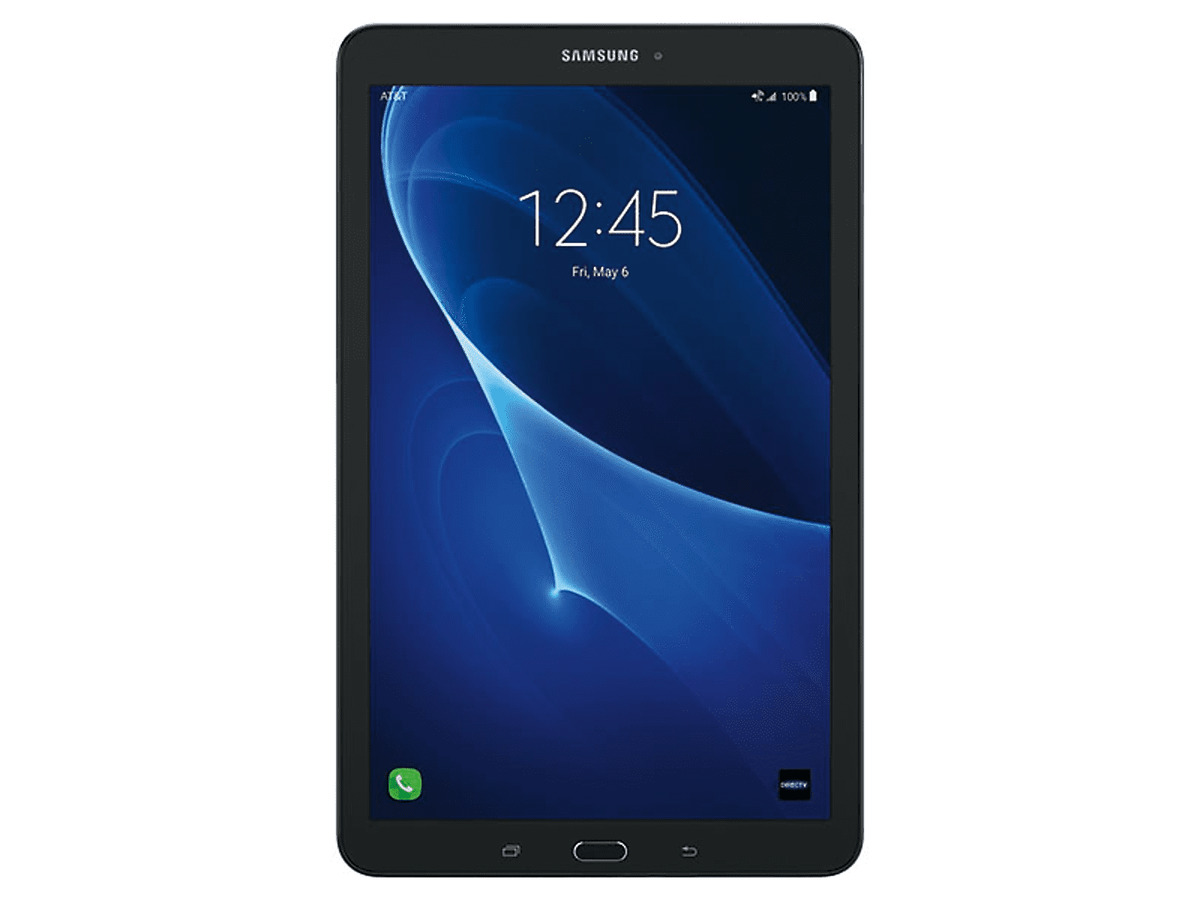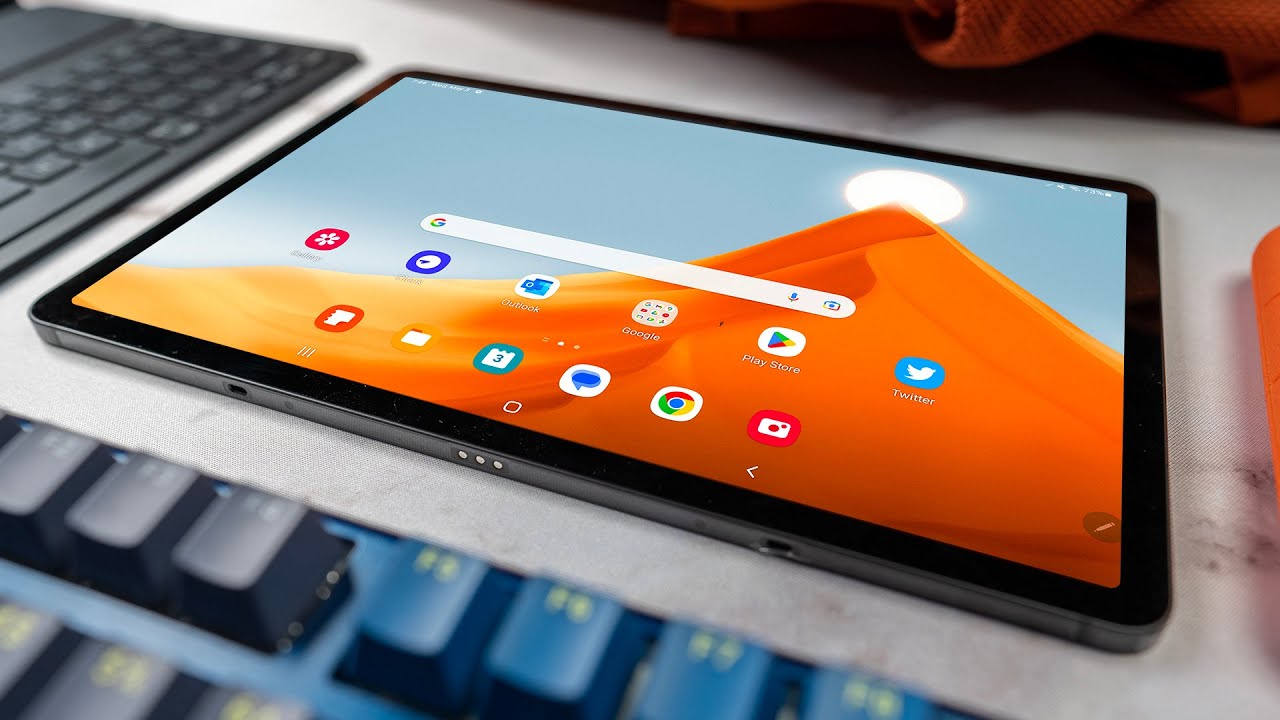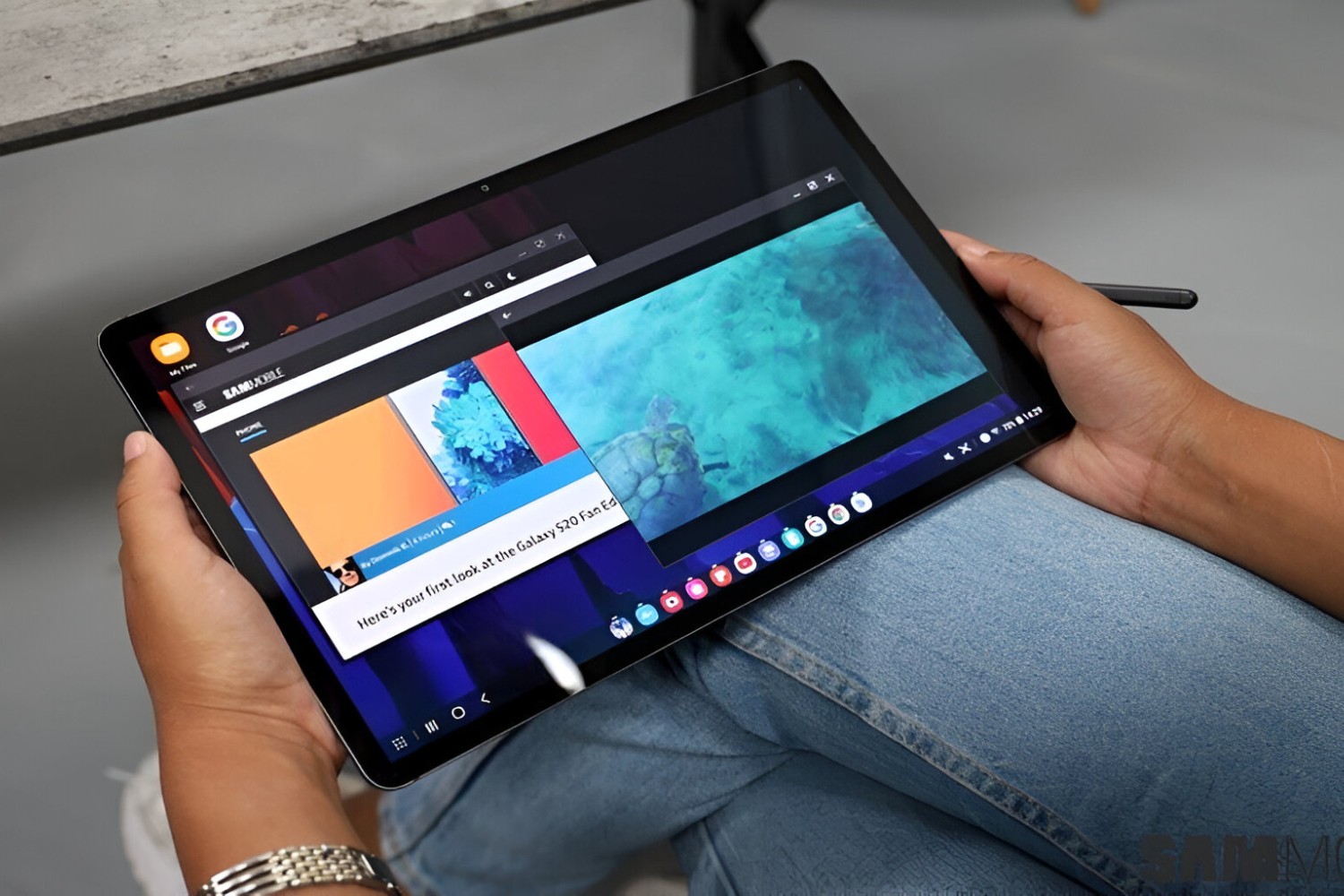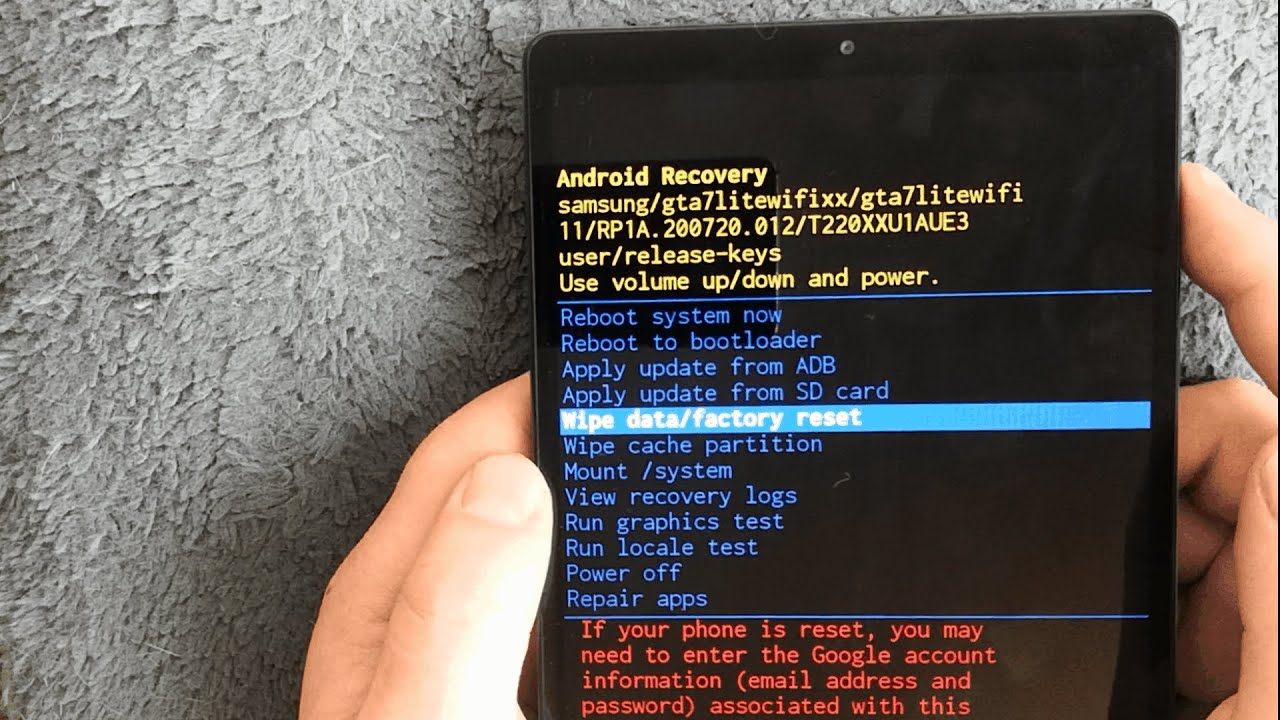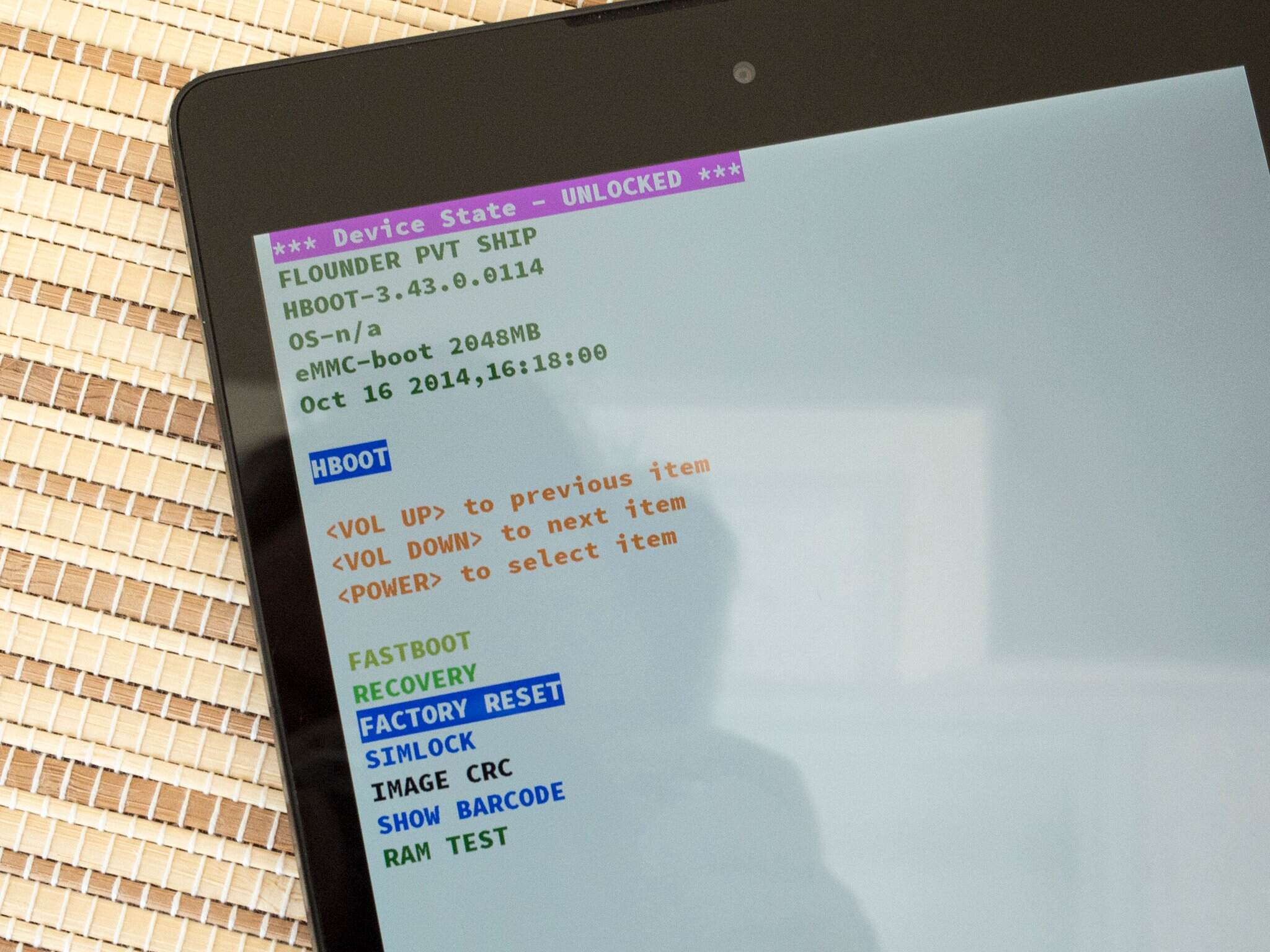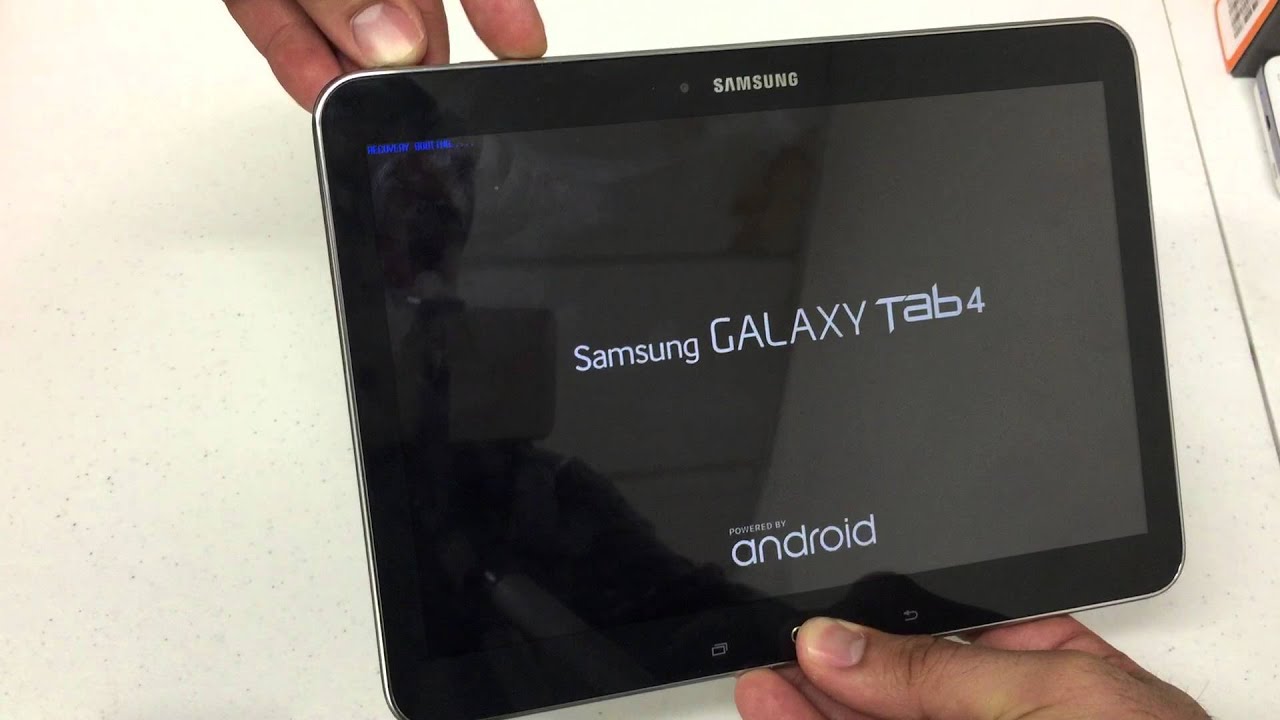Introduction
Welcome to the world of tablets, where innovative technology meets convenience and productivity. Samsung tablets have garnered popularity for their sleek design, outstanding features, and user-friendly interface. However, even the most advanced devices can experience occasional freezing or hang-ups, disrupting your workflow and causing frustration.
In this article, we will explore the common reasons why Samsung tablets freeze and provide practical solutions to prevent such issues from occurring. Whether you are a casual tablet user or rely on your device for professional purposes, understanding the causes of tablet freezing and how to address them will help you optimize your tablet experience.
Tablet freezing can stem from a variety of factors, including software-related issues, insufficient storage space, malware or virus infections, overloaded RAM, faulty applications, or even hardware problems. It is important to identify the underlying cause in order to implement the appropriate solutions effectively.
By following the tips and guidelines outlined in this article, you can take proactive measures to prevent your Samsung tablet from freezing. With a stable and reliable tablet, you can enjoy uninterrupted browsing, gaming, productivity, and entertainment experiences.
Common Reasons for Samsung Tablet Freezing
Samsung tablets, like any electronic device, are susceptible to freezing or becoming unresponsive. Understanding the common culprits behind tablet freezing can help you troubleshoot and resolve these issues effectively.
1. Insufficient Storage Space: One common reason for tablet freezing is a lack of storage space. When your tablet’s storage is nearly full, it can impact the device’s performance and cause it to freeze. Make sure to regularly free up space by deleting unnecessary files and apps.
2. Software Updates: Software updates are essential for maintaining the seamless functioning of your tablet. However, improper installation or incompatible updates can lead to freezing issues. It is important to keep your tablet’s software updated and ensure that you are installing the correct updates for your specific model.
3. Malware or Virus Infection: Tablets are not immune to malware or virus attacks. These malicious programs can interfere with the tablet’s operations and cause it to freeze. It is vital to install reliable anti-virus software and perform regular scans to detect and remove any malware or viruses from your device.
4. Overloaded RAM: Running multiple apps simultaneously or having too many apps open in the background can overload the tablet’s Random Access Memory (RAM) and lead to freezing. Close unnecessary apps and clear the RAM regularly to optimize the tablet’s performance.
5. Faulty Applications: Certain apps may have bugs or compatibility issues that can cause your tablet to freeze. If you notice that freezing occurs when using a particular app, try updating it or uninstalling and reinstalling it to resolve the issue.
6. Hardware Issues: Although less common, hardware problems can also cause tablet freezing. These may include issues with the touchscreen, battery, or internal components. If you suspect a hardware problem, it is best to contact a professional technician or the manufacturer for assistance.
By being aware of these common reasons for tablet freezing, you can take the necessary steps to troubleshoot and address the issues promptly. In the following sections, we will discuss various preventive measures that can help you keep your Samsung tablet running smoothly and minimize the risk of freezing.
Insufficient Storage Space
One of the common reasons why Samsung tablets freeze is having insufficient storage space. As you use your tablet for various activities like downloading apps, saving files, and capturing photos or videos, the available storage gradually fills up. When the storage space reaches its limit, it can affect the tablet’s performance and cause freezing or lagging.
To avoid this issue, it is important to regularly check and manage your tablet’s storage space. Here are some steps you can take:
- Delete Unnecessary Files: Go through your tablet’s files and delete any unnecessary photos, videos, or documents that you no longer need. You can also transfer files to an external storage device or cloud storage to free up space.
- Remove Unused Apps: Uninstall apps that you rarely use or no longer need. These apps take up valuable space on your tablet’s storage and can contribute to freezing issues.
- Clear App Cache: Some apps store temporary files or cache data on your tablet. Over time, these files can accumulate and occupy a significant amount of storage space. Go to your tablet’s settings, select the “Apps” or “Application Manager” option, and clear the cache for individual apps to free up space.
- Move Apps to SD Card: If your tablet supports external storage via an SD card, consider moving apps that allow it to the SD card. This can help free up internal storage space and prevent freezing caused by insufficient storage.
By regularly managing your tablet’s storage space and removing unnecessary files and apps, you can ensure that it operates smoothly without freezing or lagging due to insufficient storage. It is recommended to perform these steps periodically to maintain optimal performance.
In the next section, we will discuss the importance of software updates and how they can help prevent freezing issues on your Samsung tablet.
Software Updates
Keeping your Samsung tablet’s software up to date is crucial for maintaining its performance and preventing freezing issues. Software updates often include bug fixes, security patches, and optimizations that can improve the overall stability and functionality of your tablet.
Here are some reasons why software updates are important:
- Bug Fixes: Developers regularly release updates to address software bugs and glitches. These bugs can cause freezing or other performance issues on your tablet. Installing the latest software updates ensures that you have the most stable and bug-free version of the operating system.
- Security Patches: Software updates often include important security patches that protect your tablet from potential vulnerabilities and threats. Without these updates, your tablet may be more susceptible to malware or hacking attempts, which can lead to freezing or other security-related issues.
- Performance Optimization: Developers often optimize the performance of the operating system through software updates. These optimizations can improve the tablet’s speed, responsiveness, and overall performance, reducing the chances of freezing or lagging.
- Compatibility: Some apps or features may require the latest software version to function properly. By keeping your tablet’s software up to date, you can ensure that you have access to the latest app updates and features, minimizing compatibility issues that could cause freezing or app crashes.
To check for software updates on your Samsung tablet, follow these steps:
- Go to the settings menu on your tablet.
- Select the “Software Update” or “System Update” option.
- Tap on “Check for updates” or a similar option.
- If an update is available, follow the on-screen instructions to download and install it.
It is recommended to connect your tablet to a stable Wi-Fi network and ensure it has sufficient battery life before initiating the software update. Also, make sure to regularly check for updates and install them as they become available to keep your tablet running smoothly.
In the next section, we will discuss the potential impact of malware or virus infections on tablet freezing and ways to prevent them.
Malware or Virus Infection
Malware or virus infections can disrupt the normal operation of your Samsung tablet and potentially lead to freezing or other performance issues. These malicious programs can enter your tablet through various means, such as downloading infected apps, visiting suspicious websites, or clicking on malicious links.
Here are some important steps to prevent malware or virus infections on your tablet:
- Install Reliable Anti-virus Software: To protect your tablet from malware or viruses, it is essential to have a trusted anti-virus software installed. These software solutions can scan your tablet for potential threats, block malicious websites, and provide real-time protection against new or emerging threats.
- Be Cautious when Downloading Apps: Only download apps from trusted sources, such as the Google Play Store or the Samsung Galaxy Store. Read user reviews and check app permissions before installing them. Avoid downloading apps from unknown or untrusted sources, as they may contain malware or viruses.
- Regularly Update Apps: Keeping your apps updated is important for security. Developers often release updates to patch vulnerabilities that can be exploited by malware or viruses. Enable automatic app updates or regularly check for updates in app stores to ensure you have the latest, most secure versions of your apps.
- Avoid Suspicious Websites and Links: Be cautious when browsing the internet and avoid clicking on suspicious links or visiting untrustworthy websites. These websites can contain malicious content that can infect your tablet with malware or viruses.
- Enable App Verification: Some Android devices have a feature called “Verify Apps” that scans apps for potential security issues before installation. Ensure this feature is enabled in your tablet’s settings to add an extra layer of protection against malware or virus infections.
In addition to these preventive measures, it is important to perform regular scans with your anti-virus software to detect and remove any potential threats. If your tablet freezes or behaves unusually, it is recommended to run a thorough scan to check for any malware or viruses that may be causing the issue.
By taking these precautions and being mindful of the apps you download and the websites you visit, you can significantly reduce the risk of malware or virus infections and prevent freezing on your Samsung tablet.
In the next section, we will discuss how overloaded RAM can contribute to tablet freezing and ways to address this issue.
Overloaded RAM
Overloaded RAM can be a common cause of freezing on Samsung tablets. RAM, or Random Access Memory, is the temporary storage space that your tablet uses to hold data for active apps and processes. When you have too many apps running simultaneously or multiple tabs open in your web browser, it can overload the RAM, leading to decreased performance and freezing issues.
To address the issue of overloaded RAM and prevent freezing on your Samsung tablet, consider these steps:
- Close Unused Apps: Regularly close apps that you are not actively using. Android devices allow you to view and manage your currently running apps through the Recent Apps or App Switcher screen. Swipe away or close any apps that you are not using to free up RAM and improve performance.
- Limit Background Processes: Some apps or services run in the background even when you are not actively using them. These background processes consume RAM and can contribute to overloading. Go to your tablet’s settings and find the option to limit background processes or disable specific background apps that are not necessary.
- Restart Your Tablet: Restarting your tablet can help clear the RAM and close any lingering background processes. This can often provide a temporary boost in performance and alleviate freezing issues caused by overloaded RAM. Restart your tablet periodically, especially if you notice it becoming sluggish or freezing frequently.
- Use Task Manager or RAM Cleaner Apps: There are third-party task manager or RAM cleaner apps available that can help optimize your tablet’s RAM usage. These apps allow you to easily close unnecessary apps and clear RAM with a single tap, helping to prevent freezing caused by overloaded RAM.
By regularly managing your tablet’s RAM usage and closing unnecessary apps, you can prevent overloading and optimize performance. It is important to note that closing apps may not necessarily speed up your tablet’s performance, as some apps may restart automatically when needed. However, closing unused apps can help alleviate freezing issues and improve overall responsiveness.
In the next section, we will discuss the impact of faulty applications on tablet freezing and how to address them.
Faulty Applications
Faulty applications can be another potential cause of freezing on Samsung tablets. Sometimes, certain apps may have bugs or compatibility issues that can lead to freeze-ups or crashes. If you experience freezing specifically when using a particular app, it is likely that the app itself is causing the problem.
To address issues related to faulty applications and prevent freezing on your Samsung tablet, consider the following steps:
- Update the App: Developers often release updates to their apps to fix bugs and improve overall performance. Make sure that the problem app is up to date by checking for updates in the app store. Updating the app may resolve any issues that were causing the freezing.
- Uninstall and Reinstall the App: If updating the app does not resolve the freezing issue, try uninstalling and reinstalling it. This can help clear any corrupted files or data associated with the app and provide a fresh installation, which may eliminate the freezing problem.
- Clear App Cache: Some apps store temporary data or cache files on your tablet. Over time, these files can accumulate and potentially cause freezing issues. Clearing the app’s cache can help resolve this problem. Go to your tablet’s settings, select the “Apps” or “Application Manager” option, find the problem app, and clear its cache.
- Contact the App Developer: If the freezing issue persists even after updating and reinstalling the app, it is recommended to reach out to the app developer for assistance. They may be aware of the issue and have specific instructions or updates to resolve the problem.
It is important to note that if the freezing issue only occurs with a specific app, it is most likely not a problem with your tablet’s hardware or overall software. By troubleshooting and addressing the specific app causing the freeze, you can prevent further issues and enjoy a smoother tablet experience.
In the next section, we will discuss the potential hardware issues that can cause tablet freezing and how to address them.
Hardware Issues
While software-related issues are often the primary cause of freezing on Samsung tablets, it is possible for hardware problems to contribute to these issues as well. Unfortunately, hardware issues can be more challenging to resolve on your own and may require professional assistance or device repairs. Here are some potential hardware issues that can cause tablet freezing:
- Touchscreen Problems: If the touchscreen on your Samsung tablet is unresponsive or behaves erratically, it can lead to freezing or difficulties in using the device. This may be due to a malfunctioning digitizer or faulty touch sensors. Contacting the manufacturer or a qualified technician can help diagnose and resolve touch-related hardware problems.
- Battery Problems: Insufficient power supply or a malfunctioning battery can cause freezing or unexpected shutdowns. If your tablet freezes when the battery level is low or certain battery-related issues persist, it may indicate a problem with the battery. In such cases, consult the manufacturer or a professional technician to address the battery-related problem.
- Hardware Incompatibility: Sometimes, incompatible hardware components or accessories can cause freezing on your tablet. For example, using a faulty charger or an incompatible memory card may lead to performance issues. Ensure that you are using compatible and genuine accessories recommended by the manufacturer to avoid potential hardware compatibility problems.
- Internal Component Failure: Various internal components, such as the processor, memory chips, or storage, can fail over time or due to physical damage. If your tablet freezes consistently, even after implementing software-related fixes, it may indicate a more serious hardware issue. In such cases, it is recommended to seek professional assistance from the manufacturer or a qualified technician.
If you suspect that a hardware issue is causing freezing on your Samsung tablet, it is best to consult the manufacturer’s support or contact a professional technician for guidance. Attempting to repair or replace hardware components without proper knowledge and expertise may further damage your device.
By identifying and addressing hardware issues promptly, you can ensure that your Samsung tablet operates smoothly without freezing or performance interruptions.
In the next section, we will discuss preventive measures to help you avoid tablet freezing and maintain optimal performance.
Ways to Prevent Samsung Tablet from Freezing
Prevention is always better than cure when it comes to tablet freezing. By implementing some simple preventive measures, you can significantly reduce the risk of freezing and maintain optimal performance on your Samsung tablet. Here are some effective ways to prevent tablet freezing:
- Clearing Cache: Regularly clear the cache of your apps to remove temporary files and data that can accumulate over time. This helps to free up storage space and prevent potential conflicts that can lead to freezing.
- Deleting Unnecessary Files: Periodically go through your tablet and delete any unnecessary files, such as old photos, videos, documents, or downloads. This frees up storage space and prevents the tablet from becoming cluttered, reducing the chances of freezing.
- Updating Software: Stay up to date with the latest software updates for your tablet’s operating system and apps. These updates often contain bug fixes, performance improvements, and security patches that help prevent freezing and ensure compatibility with newer applications.
- Avoiding Suspicious Websites and Apps: Be mindful of the websites you visit and the apps you download. Stick to reputable sources, such as official app stores, and avoid clicking on suspicious links or downloading apps from unknown sources. This reduces the risk of downloading malware or viruses that can cause freezing or other issues.
- Using Reliable Anti-virus Software: Install a reputable anti-virus software on your tablet and regularly scan for malware or viruses. This provides an added layer of protection against potential threats that can affect your tablet’s performance and cause freezing.
- Enabling High Performance Mode: Some Samsung tablets have a high-performance mode that boosts the device’s performance at the expense of battery life. When engaging in resource-intensive tasks, such as gaming or video editing, enabling high-performance mode can help prevent freezing and ensure smooth operation.
- Running Device Maintenance: Many Samsung tablets come with built-in device maintenance features that help optimize performance. These features typically include functions like battery optimization, storage cleaning, and RAM management. Run regular device maintenance checks to keep your tablet running smoothly.
- Cleaning the Tablet Regularly: Dust and debris can accumulate in the ports, speakers, and vents of your tablet over time. This can impact performance and cause overheating, leading to freezing. Use a soft cloth or brush to clean these areas periodically, ensuring proper airflow and preventing potential issues.
By following these preventive measures, you can greatly reduce the likelihood of your Samsung tablet freezing and enjoy a smooth and uninterrupted experience. Remember to keep your tablet updated, maintain good storage management practices, and be cautious of the apps and websites you interact with to ensure optimal performance.
Finally, if you experience persistent freezing issues despite implementing these preventive measures, it is recommended to consult the manufacturer’s support or seek professional assistance from a technician specialized in tablet repairs.
Clearing Cache
Clearing the cache on your Samsung tablet is an effective way to prevent freezing and optimize performance. As you use various apps on your tablet, they often create temporary files and store data in a cache to access it quickly in the future. Over time, these cache files can accumulate and become outdated or unnecessary, which can impact the tablet’s performance and lead to freezing.
Here’s how you can clear the cache on your Samsung tablet:
- Open the Settings app on your tablet.
- Scroll down and select the “Apps” or “Application Manager” option.
- Swipe left or right to navigate through the list of installed apps.
- Select the app for which you want to clear the cache.
- Tap on the “Storage” or “Storage Usage” option.
- You will see the “Clear cache” button. Tap on it to clear the cache for that particular app.
Alternatively, some Samsung tablets offer a built-in feature called “Device Maintenance” or “Smart Manager” that allows you to clear the cache for all installed apps at once. You can find this feature in the Settings app and use it to perform a comprehensive cache cleanup.
Clearing the cache on your Samsung tablet has several benefits:
- Improved Performance: Clearing the cache helps free up storage space and allows apps to function more efficiently. This can lead to improved overall performance, faster loading times, and reduced freezing or lagging.
- More Storage Space: Cache files can occupy a significant amount of storage space over time. By clearing the cache regularly, you can reclaim valuable storage space and prevent it from becoming filled up, which can contribute to freezing issues.
- Reduced Compatibility Issues: Outdated or corrupt cache files can sometimes cause compatibility issues, resulting in app crashes or freezing. Clearing the cache can help resolve these compatibility issues and ensure smooth functioning of the apps.
- Refreshed App Data: Clearing the cache essentially resets the temporary data stored by the app. This can be particularly helpful if you encounter issues with a specific app freezing or misbehaving. Clearing the cache allows the app to start fresh and may resolve the freezing problem.
It is recommended to clear the cache for your apps regularly, especially for those that you use frequently or notice freezing issues with. However, keep in mind that clearing the cache will remove temporary data, but it will not delete any personal settings or data associated with the app.
By taking the time to clear the cache on your Samsung tablet, you can optimize its performance, reduce the risk of freezing, and ensure a smoother and more enjoyable user experience.
Deleting Unnecessary Files
Deleting unnecessary files from your Samsung tablet is an essential step to prevent freezing and maintain optimal performance. As you use your tablet, it accumulates various files, including photos, videos, documents, downloads, and app data. Over time, these files can take up valuable storage space and contribute to a cluttered system, leading to potential freezing issues.
Here are several steps you can take to declutter your tablet and delete unnecessary files:
- Identify Unwanted Files: Begin by identifying the types of files that you no longer need. This can include old photos, videos, documents, or downloaded files that you have already backed up or no longer require.
- Organize and Backup: Before deleting any files, make sure to organize them into appropriate folders and consider backing up important files to an external storage device or cloud storage for an extra layer of protection.
- Delete Redundant Apps: Take a look at your installed apps and remove any that you no longer use or need. Uninstalling unused apps not only frees up storage space but can also prevent potential conflicts that may cause freezing or performance issues.
- Review Downloads: Navigate to your Downloads folder and assess its contents. Delete any files that you no longer need, such as downloaded documents, installation files, or ZIP archives that you have already extracted.
- Clearing App Data: Some apps store a significant amount of data on your tablet, even after you delete the app itself. If you notice apps with large storage usage, go to the Settings app, select “Apps” or “Application Manager,” choose the app, and clear its data. This will remove any unnecessary data associated with that particular app.
By regularly deleting unnecessary files and apps, you can experience several benefits:
- Increased Storage Space: Removing unnecessary files creates more available storage space on your tablet. This helps to prevent your device from becoming overloaded, reducing the risk of freezing and improving overall performance.
- Streamlined File Organization: Deleting unwanted files allows you to keep your tablet’s files organized and easier to navigate. By decluttering your device, it becomes more efficient and provides a smoother user experience.
- Enhanced Speed and Responsiveness: With fewer files to process, your tablet can perform tasks more quickly and respond faster to your commands. This can lead to improved multitasking capabilities and a reduction in freezing issues.
- Reduced Backup and Transfer Times: Having a smaller set of files to backup or transfer to another device can save time and reduce the risk of errors or data loss.
Regularly deleting unnecessary files is an important maintenance task for your Samsung tablet. It helps optimize its performance, prevents freezing, and ensures you have sufficient storage space for new files and apps.
In the next section, we will discuss the significance of updating software on your Samsung tablet and how it helps prevent freezing issues.
Updating Software
Updating the software on your Samsung tablet is crucial for maintaining optimal performance and preventing freezing issues. Software updates typically include bug fixes, security patches, and performance improvements that enhance the overall functionality and stability of your device.
Here are some key reasons why updating the software on your Samsung tablet is important:
- Bug Fixes: Software updates often address bugs and glitches that can impact the performance and stability of your tablet. These bugs can lead to freezing or other system malfunctions. By installing the latest updates, you ensure that your tablet has the most up-to-date bug fixes, resulting in improved performance and a reduced risk of freezing.
- Security Patches: Keeping your tablet’s software up to date helps protect it from potential security vulnerabilities. Software updates often include important security patches that guard against the latest threats and malware. By staying up to date, you minimize the risk of malicious attacks that can cause freezing or compromise the security of your tablet.
- Performance Optimization: Developers constantly work to optimize the performance of the operating system. Through software updates, they introduce performance enhancements and optimizations that make your tablet run smoother and faster. These improvements can help prevent freezing and ensure a seamless user experience.
- Compatibility with New Apps and Features: Application developers regularly update their apps to take advantage of new features and functionalities offered by the latest software version. By keeping your tablet up to date, you ensure compatibility with newer apps and features, reducing the likelihood of freezing or crashes caused by outdated software.
To check for software updates on your Samsung tablet and install them, follow these steps:
- Open the Settings app on your tablet.
- Scroll down and select the “Software Update” or “System Update” option.
- Tap on “Check for updates” to see if a new update is available.
- If an update is available, follow the on-screen instructions to download and install it.
It is recommended to connect your tablet to a stable Wi-Fi network before checking for updates, as updates can be large in size. Additionally, ensure that your tablet has sufficient battery life or is connected to a charger during the update process to avoid any interruptions.
Regularly updating the software on your Samsung tablet ensures that it remains optimized, secure, and less prone to freezing. It is a good practice to check for updates frequently to maintain the best possible performance.
In the next section, we will discuss how to avoid freezing issues caused by suspicious websites and apps.
Avoiding Suspicious Websites and Apps
Being cautious about the websites you visit and the apps you download is crucial for preventing freezing issues and maintaining the security of your Samsung tablet. By avoiding suspicious websites and apps, you can minimize the risk of encountering malware, viruses, or other malicious entities that can cause freezing or compromise the performance of your device.
Here are some important steps you can take to avoid suspicious websites and apps:
- Stick to Trusted Sources: When downloading apps, stick to trusted sources such as the official Google Play Store or the Samsung Galaxy Store. These platforms have strict security measures in place, reducing the risk of downloading apps that contain malware or other harmful elements.
- Read User Reviews and Ratings: Before downloading an app, take the time to read user reviews and check the ratings. These insights can provide valuable information about the app’s performance, reliability, and the developer’s reputation.
- Check App Permissions: Pay attention to the permissions requested by an app before installing it. If an app asks for excessive permissions that seem unrelated to its functionality, it may be a red flag. Exercise caution and consider whether the requested permissions are necessary for the app’s intended purpose.
- Avoid Clicking on Suspicious Links: Beware of unsolicited emails, pop-ups, or messages that contain suspicious links. These links may lead you to malicious websites that can infect your tablet with malware or viruses. Instead, rely on direct and reputable sources for information and access content.
- Install Antivirus Software: To add an extra layer of protection, install a reliable antivirus software on your Samsung tablet. These security apps can detect and warn you about suspicious websites, potentially harmful apps, and provide real-time protection against various threats.
- Keep Apps and OS Updated: Updates often contain security patches that address known vulnerabilities, reducing the risk of freezing or security issues. Ensure that both your apps and the operating system on your tablet are updated to their latest versions. Implementing these updates helps protect against potential threats and ensures compatibility with newer security measures.
By following these precautions, you can significantly reduce the risk of encountering suspicious websites and apps that can cause freezing or compromise the security of your Samsung tablet.
It is important to remain vigilant and exercise caution while browsing the internet or installing new apps. Trust your intuition and rely on reputable sources to ensure that your tablet stays safe and performs optimally.
In the next section, we will discuss the importance of using reliable antivirus software on your Samsung tablet and the benefits it provides.
Using Reliable Anti-virus Software
Protecting your Samsung tablet from malware, viruses, and other potential threats is crucial for preventing freezing issues and maintaining the security of your device. To achieve this, it is important to use reliable anti-virus software that can detect and prevent malicious attacks.
Here are some reasons why using reliable anti-virus software is important:
- Detection and Removal of Malware: Anti-virus software is designed to detect and remove various types of malware, including viruses, ransomware, spyware, and adware. By regularly scanning your tablet, you can identify and eliminate any potential threats that may cause freezing or compromise your tablet’s performance.
- Real-Time Protection: Reliable anti-virus software provides real-time protection, constantly monitoring your tablet for any malicious activities or potential threats. This proactive approach helps prevent freezing caused by malware or viruses before they can harm your device.
- Safe Browsing: Anti-virus software often includes features that protect you while browsing the internet. These features warn you about suspicious websites, phishing attempts, and potentially harmful downloads. By utilizing these tools, you can avoid dangerous websites that may lead to freezing or other security issues.
- App Scanning: Anti-virus software can scan apps installed on your Samsung tablet, verifying their safety and integrity. This ensures that you are running legitimate, non-malicious apps that are less likely to cause freezing or compromise your tablet’s security.
- Regular Updates: Reliable anti-virus software receives regular updates from developers to stay up to date with the latest threats and vulnerabilities. These updates help protect your tablet against emerging threats and maintain the highest level of security.
When using anti-virus software on your tablet, consider the following guidelines:
- Choose a Trusted Anti-virus Solution: Select a reputable and recognized anti-virus software from a reliable provider. Read reviews and consider features, such as real-time protection, scanning capabilities, and user-friendly interface, to ensure you have the best protection for your tablet.
- Keep the Anti-virus Software Updated: Regularly update your anti-virus software to ensure it has the latest virus definitions and security updates. Set up automatic updates whenever possible to keep your tablet protected without manual intervention.
- Perform Regular Scans: Schedule regular scans of your tablet using the anti-virus software. This includes both full system scans and quick scans to ensure that your tablet remains free from malware and other threats. It is recommended to perform scans at least once a week or as per the software’s recommendations.
- Be Mindful of Battery Usage: Keep in mind that running anti-virus software in the background can impact your tablet’s battery life. Adjust the settings of the software to balance battery usage and protection based on your personal preferences.
By using reliable anti-virus software on your Samsung tablet, you can significantly reduce the risk of freezing caused by malware or viruses. It is an important step in maintaining the security and performance of your device.
In the next section, we will discuss the benefits of enabling high-performance mode on your Samsung tablet to prevent freezing and enhance performance during resource-intensive tasks.
Enabling High Performance Mode
Enabling high-performance mode on your Samsung tablet can help prevent freezing and enhance performance, especially during resource-intensive tasks. High-performance mode boosts your device’s processing power and maximizes performance, potentially reducing lag and ensuring a smoother user experience.
Here are some key benefits of enabling high-performance mode on your Samsung tablet:
- Enhanced Processing Power: High-performance mode increases the processing power of your tablet, allowing it to handle demanding tasks more efficiently. This can be particularly useful when running graphics-intensive games, video editing software, or other resource-heavy applications.
- Improved Responsiveness: By enabling high-performance mode, you can experience improved responsiveness and reduced lag. Your tablet will be quicker to respond to your commands, making it easier to navigate through apps and perform tasks without freezing or delays.
- Optimized System Performance: High-performance mode optimizes the operating system’s performance, balancing the workload and prioritizing tasks for smoother multitasking. This can be beneficial when running multiple apps simultaneously, preventing freezing caused by overloading the system resources.
- Reduced Overheating: While enabling high-performance mode can increase the tablet’s performance, it may also lead to increased heat generation. However, reputable high-performance modes also have built-in measures to prevent overheating by controlling temperature thresholds and ensuring safe operation.
Keep in mind that enabling high-performance mode may have an impact on your tablet’s battery life. The increased processing power and performance often require more energy, resulting in a faster battery drain. It is recommended to use high performance mode when necessary, such as during demanding tasks or gaming sessions, and switch back to normal performance mode for everyday usage to conserve battery life.
To enable high-performance mode on your Samsung tablet, follow these general steps:
- Open the Settings app on your tablet.
- Scroll or search for the “Performance” or “Battery” section.
- Look for an option related to power modes, such as “Power Mode” or “Battery Mode”.
- Select the high-performance mode or the option that provides the most power for your tablet.
- Review any additional settings or warnings associated with high-performance mode.
- Toggle the switch to enable high-performance mode.
It is worth mentioning that not all Samsung tablets have a high-performance mode or a similar feature. The availability and functionality of this mode may vary depending on the specific tablet model and the version of the operating system.
By enabling high-performance mode when necessary, you can turbocharge your tablet’s performance and reduce the risk of freezing or lagging, ensuring a smooth and enjoyable user experience.
In the next section, we will discuss the importance of running device maintenance on your Samsung tablet to prevent freezing and optimize performance.
Running Device Maintenance
Running device maintenance on your Samsung tablet is essential for preventing freezing issues and ensuring optimal performance. Device maintenance is a built-in feature that helps optimize your tablet’s performance by performing various tasks to keep your device running smoothly.
Here are some important benefits of running device maintenance on your Samsung tablet:
- Battery Optimization: Device maintenance features often include battery optimization functions that help extend your tablet’s battery life. By managing background processes, reducing power consumption, and optimizing system settings, device maintenance can improve battery performance and help prevent freezing due to low battery levels.
- Storage Cleaning: Over time, your tablet can accumulate unnecessary files, temporary data, and cache files. Device maintenance performs storage cleaning by removing these files, freeing up storage space and preventing the tablet from becoming overwhelmed with unnecessary data, reducing the risk of freezing.
- RAM Management: Device maintenance helps manage the tablet’s Random Access Memory (RAM) by closing unused apps and freeing up memory resources. By optimizing the allocation of system resources, device maintenance can prevent RAM overload, which can lead to freezing or slowness.
- Security Scans: Some device maintenance features include security scanning capabilities. They can scan your tablet for malware, viruses, and potentially harmful files, helping to safeguard your device from security threats that may cause freezing or compromise the performance of your tablet.
- Performance Boost: Running device maintenance can provide a performance boost by optimizing the tablet’s system settings, clearing unnecessary files, and ensuring that resources are allocated effectively. This can result in improved responsiveness, faster app launches, and an overall smoother user experience.
To run device maintenance on your Samsung tablet, follow these general steps:
- Open the Settings app on your tablet.
- Scroll or search for the “Device Maintenance” or “Device Care” section.
- Tap on the option to access the device maintenance features.
- Review the available options and select the actions you want to perform, such as battery optimization, storage cleaning, or security scanning.
- Follow the on-screen instructions to start the maintenance process.
Depending on your tablet model and software version, the device maintenance options and user interface may vary. Some tablets may have additional features, such as storage optimization or performance modes, that you can customize to suit your needs.
It is recommended to run device maintenance regularly or as needed to keep your Samsung tablet performing at its best. By performing routine maintenance tasks, you can prevent freezing issues, optimize performance, and ensure a smooth and efficient user experience.
In the next section, we will discuss the importance of cleaning your tablet regularly to maintain its performance and prevent freezing.
Cleaning the Tablet Regularly
Cleaning your Samsung tablet regularly is vital for maintaining its performance, preventing freezing, and prolonging the lifespan of your device. Dust, dirt, and smudges can accumulate on your tablet’s screen, ports, and speakers over time, affecting its functionality and potentially causing freezing or other issues.
Here are some key reasons why regular cleaning is important:
- Optimized Performance: A clean tablet allows for optimal performance. Dust and dirt can clog ports or interfere with connections, leading to reduced functionality or even causing freezing. Regular cleaning helps ensure that all components of your tablet function properly, enhancing overall performance.
- Prevention of Overheating: Dust accumulation on your tablet’s internal components can impact airflow and lead to overheating. Excessive heat can degrade performance, trigger thermal throttling, or even cause your tablet to freeze. By keeping your tablet clean, you help prevent overheating and maintain optimal performance.
- Clear Screen Visibility: A clean screen not only enhances the visual experience but also allows for better touch responsiveness. Removing fingerprints, smudges, and dirt from the screen ensures clarity and responsiveness, preventing freezing or lagging issues during touch interactions.
- Maintenance of Audio Quality: Dirty speaker grills or headphone jacks can obstruct sound output or cause distortion. Regular cleaning of these areas ensures clear audio quality, preventing freezing or connectivity issues when using headphones, speakers, or other audio accessories.
When cleaning your Samsung tablet, keep the following tips in mind:
- Use Microfiber Cloth: A microfiber cloth is ideal for cleaning your tablet’s screen and body. It is gentle and helps remove fingerprints, dust, and smudges effectively without scratching the surface.
- Avoid Liquid Cleaners: Refrain from using liquid cleaners directly on your tablet. Instead, slightly dampen the microfiber cloth with water or use screen-cleaning solutions specifically designed for electronic devices.
- Be Gentle: When cleaning, apply gentle pressure to avoid damaging the screen or other sensitive components. Avoid using sharp objects or abrasive materials that may scratch or cause physical damage to the tablet.
- Pay Attention to Ports and Vents: Use a soft brush or compressed air to clean ports, speaker grills, and vents. This helps remove any debris or dust that may have accumulated, ensuring proper airflow and preventing freezing due to overheating.
- Keep Tablets Dry: Avoid exposing your tablet to excessive moisture or humidity, as it can cause damage to internal components. Clean your tablet in a dry environment and ensure it is completely dry before using or charging.
Make cleaning your tablet a regular part of your device maintenance routine. By keeping your tablet clean and free from dust and dirt, you can optimize its performance, prevent freezing, and enjoy a better overall user experience.
In the next section, we will summarize the key points discussed throughout this article.
Conclusion
Preventing freezing on your Samsung tablet is essential for maintaining optimal performance and ensuring a smooth user experience. By addressing common causes of freezing and implementing preventive measures, you can minimize the risk of freezing and enjoy uninterrupted tablet usage.
We explored various factors that can contribute to tablet freezing, including insufficient storage space, outdated software, malware or virus infections, overloaded RAM, faulty applications, and hardware issues.
To prevent freezing, consider implementing the following practices:
- Regularly clear cache and delete unnecessary files to free up storage space and improve performance.
- Keep your tablet’s software and apps updated to benefit from bug fixes, security patches, and performance improvements.
- Be cautious when browsing the internet and downloading apps, avoiding suspicious websites and apps that may contain malware or viruses.
- Use reliable anti-virus software and regularly scan your tablet for potential threats.
- Enable high-performance mode when necessary to boost processing power and performance during resource-intensive tasks.
- Run device maintenance periodically to optimize battery life, clean storage, manage RAM, and enhance overall performance.
- Clean your tablet regularly to maintain performance, prevent overheating, and ensure clear visibility and audio quality.
By following these preventive measures, you can significantly reduce the risk of freezing on your Samsung tablet, ensuring smoother operations, longer battery life, and an enhanced user experience.
Remember, if you continue to experience persistent freezing issues despite implementing these measures, it is recommended to seek professional assistance from the manufacturer’s support or a qualified technician.
Keep your Samsung tablet running smoothly and enjoy all the incredible features and functionality it has to offer, free from the frustration of freezing or lagging.







